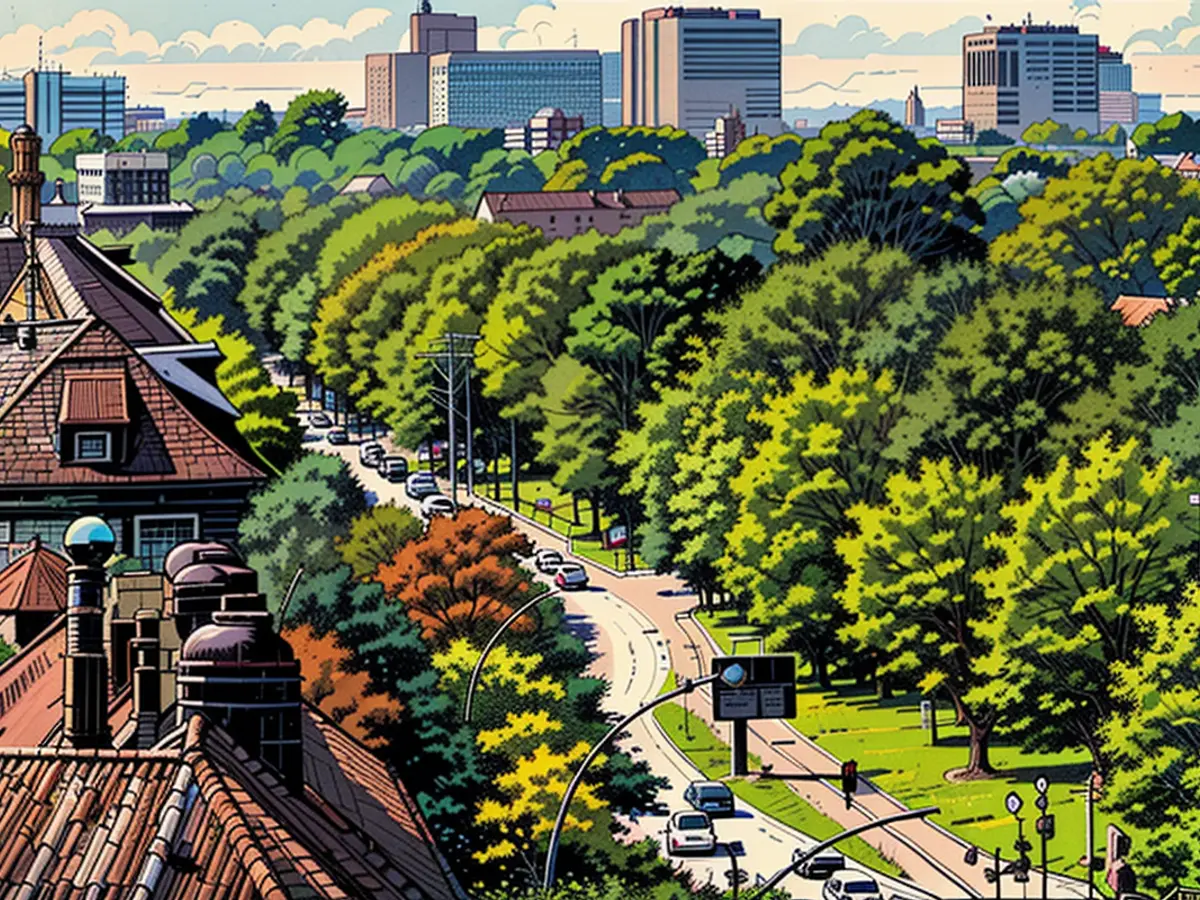Magistrales - Masterplan for the development of major transport arteries
With the Masterplan Magistralen 2040+, the red-green Senate has decided on a strategy for the urban development of Hamburg's major inner and outer roads. In total, this involves more than 80 square kilometers of area along a total length of 160 kilometers on twelve defined Magistralen, according to Urban Development Senator Karen Pein (SPD) and Oberbaudirektor Franz-Joseph Hoeing at the presentation of the plans.
These areas are supposed to be developed into attractive residential and working areas as well as future-oriented and climate-adapted mobility locations in the coming years and decades.
Of the twelve Magistralen in the plan, eight run north of the Elbe in a star-shaped manner from the inner city towards the hinterland, one forms the Ring2. One connects the Innenstadt with the Süderelbbrücken, and two run south of the Elbe.
"The major inner and outer roads are the life arteries of our city and more than just through spaces," said Pein. "More than half a million people live along these Magistralen." 28 percent of the Magistralen network is bordered by office and industry, and 83 percent is also used for housing. Additionally, there are 61.8 kilometers of green and recreational spaces along the Magistralen.
Magistralen should be diverse and lively city streets
Their future developments should be based on four overarching goals: "The Magistralen will be diverse and lively city streets with attractive public spaces, they will be focal points of inner development, they will be opportunities for inner development, and they will be focal points of the mobility turnaround and climate adaptation," said Pein.
The Masterplan deals with the question of where there is development potential along the Magistralen beyond their transport significance, said Hoeing. "How should the currently rather rough and unsightly Magistralen areas look in various spatial situations?" This not only refers to the streets themselves but also to the areas in the second and third rows.
Development of Magistralen as a generational task
"Together with the districts and the specialist authorities, we want to gradually transform the Magistralen, create new spaces for housing, industry, leisure and education, and make the Magistralen fit for the demands of the future," said he. In particular, the already lively centers and areas of the Inner City should be encouraged through diverse ground-floor zones, attractive green spaces, and more space for pedestrian and bicycle traffic.
However, traffic calming and housing construction were not the main focus of the plans. Everything must go hand in hand, said the Oberbaudirektor. Pein emphasized that there are no concrete targets for housing construction. She sees "great potential."
Everything takes time, said Hoeing. That's why the Masterplan was also named 2040+. "Pay attention to the plus, because it's also a generational task." In the context of a Stadtwerkstatt, the plans will be presented to all interested Hamburgers and Hamburgers from autumn onwards.
Opposition criticizes plans [
(Note: The last sentence seems to be incomplete and not related to the main text. I assume it's a mistake and should be omitted.)
The opposition in the legislature, who are set to decide on the masterplan, criticized the plans as not concrete and too long-term enough. "Magistralenbebauung is a complex project," said CDU city development expert Anke Frieling, "even without planning all traffic areas at the same time." The plots belong to various owners with different interest alignments. "Given the housing shortage in Hamburg, all possibilities for quickly granting building rights for housing along the Magistralen must be exhausted."
Hundreds of thousands of residents along the Magistralen are already suffering from too much traffic and noise today, said Heike Sudmann, spokesperson for urban development for the Left. "Unfortunately, there is still no hope for quick improvement. The senate isn't even introducing Tempo 30 there yet to at least reduce the noise."
AFD fraction vice president Alexander Wolf spoke of "helpless activism" in the run-up to the legislative election. "The blocking of the main traffic arteries leads to a traffic collapse," he warned, and demanded "the halt of these costly and meaningless experiments" and effective investments for the preservation of traffic infrastructure.
- Senator Karen Pein from the SDP, speaking about the Masterplan Magistralen 2040+, highlighted that the Elbe's major inner and outer roads serve as the city's life arteries, housing more than half a million people.
- The development of the Magistralen areas, according to the masterplan, aims to create diverse and lively city streets, focal points of inner development, opportunities for urban development, and focal points of the mobility turnaround and climate adaptation.
- Oberbaudirektor Franz-Joseph Hoeing noted that the Masterplan deals with the development potential beyond transport significance along the Magistralen, including questions about the future appearance of these areas and the surrounding streets and spaces.
- The Oberbaudirektor also stressed that the development of the Magistralen is a generational task, requiring careful planning and collaboration with districts and specialist authorities to create new spaces for housing, industry, leisure, and education, while also considering traffic calming and pedestrian and bicycle traffic.
- Criticism of the plans by the opposition in the legislature includes concerns about insufficient concreteness and the long-term nature of the masterplan, as well as calls for expediting housing construction along the Magistralen to address the housing shortage in Hamburg.








